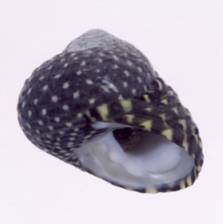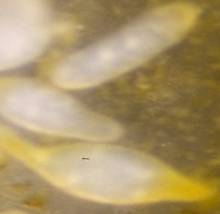
Kirsten Donald
Contact:
Department of Zoology,
University of Otago,
Dunedin.
E-mail: kirsten.donald@toroa.otago.ac.nz
Principal Investigator:
Assoc. Prof. Hamish G. Spencer, University of Otago.
Associate Investigators:
Dr. Michael. S. Roy, Smithsonian Tropical Research Institute, Panama.
Dr. Robert Poulin, University of Otago.
Research Fellow:
Dr. Kirsten Donald, University of Otago.
Prevailing theory suggests that many parasite species have evolved in tight congruence with their hosts, with the parasite's phylogeny mirroring that of the host. However, this theory is based largely on host-parasite interactions in species where strong links would be expected, for example seabirds and their feather lice evolved in tandem, with different bird species hosting different lice species (Paterson et al., 1993). This is unsurprising as the birds breed in monospecific colonies and lice do not survive for long away from their host. In these instances parasites only come into contact with a single potential host species, meaning that opportunities for host switching are low.
This study will focus on the host-parasite relationship between a group of common intertidal topshells and their trematode parasites. Topshells belonging to the genera Diloma and Melagraphia are common around New Zealand and one Diloma species also inhabits Chile. Related forms, belonging to the genus Austrocochlea, are common along the southern coast of Australia. Diloma, Melagraphia and Austrocochlea are all potential first-intermediate hosts of digenean trematodes, which infest the snail's digestive gland.
The phylogeny of the topshells is currently unresolved, with poorly defined generic boundaries. The phylogeny of their digenean parasites is even less clear, based on their morphology they have speculatively been placed in Family Opecoelidae.

While topshells have slightly different ecological requirements, their distributions broadly overlap (for example, at Purakaunui Inlet, near Dunedin, six topshell species were found within a 20 m radius). Digenean eggs, which are shed into the water column in the faeces of the definitive host, are likely to encounter several potential host topshell species, so opportunities for host-switching are great. Consequently these groups of topshells and parasites provide an excellent test of the ecological requirements for a tight co-evolutionary relationship.
Of the large number of topshell populations that we have sampled in both New Zealand and Australia, four New Zealand and three Australian species harboured digenean trematodes. We are currently employing the molecular technique of mtDNA sequencing to resolve the phylogenies of both the topshells and their trematodes. Initially these results will allow us to examine questions about the geographic distribution and dispersal in both groups. Ultimately, however, the goal of this study is to address questions about the co-evolution of this group of snails and their digenean parasites.
We will use the two molecular phylogenies to ask: are the two trees congruent?; has speciation occurred at the same time in each tree?; are rates of speciation similar in both host and parasite?; if not, do the parasites radiate faster as is the case, for example, in lice living on vertebrate hosts?; is there evidence of host-switching or multiple lineages and extinctions of parasites?
References:
Paterson, A.M., Gray, R D. and Wallis, G.P. (1993) Parasites, petrels and penguins - does louse presence reflect seabird phylogeny ? International Journal for Parasitology 23: 515-526.
|